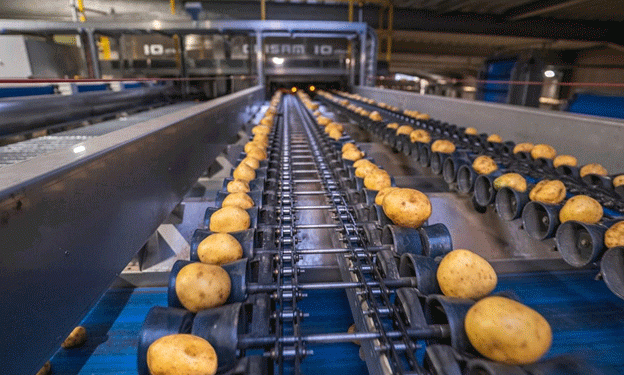In the fast-paced world of agriculture, particularly within the potato industry, labor challenges are becoming increasingly pronounced. As we engage with potato growers and packers across the globe, it’s evident that finding and retaining skilled, reliable workers is harder than ever. This labor shortage threatens the operational efficiency necessary to meet market demands, jeopardizing the ability to deliver on time and achieve volume targets. For those in the industry, customer satisfaction hinges on consistency, and failure to deliver could have severe repercussions.
In this article, we’ll delve into the top challenges posed by labor shortages and explore potential solutions to ensure your business remains competitive and reliable.
The Productivity Pressure in a Competitive Market
The potato industry is fiercely competitive, with everyone striving for a slice of the market. Efficiency and cost-effectiveness are crucial to survival. However, with rising labor costs and fewer hands on deck, productivity is at risk. According to recent industry reports, labor shortages have led to a 20% increase in operational costs for some potato growers, as fewer workers slow down processing and packing activities. In a market where margins are already thin, any inefficiency can be detrimental.
The solution? Many in the industry are turning to automation and mechanization to fill the gaps left by labor shortages. Advanced grading and packing machines are increasingly being adopted, which can significantly reduce labor dependency while maintaining or even improving output.
Maintaining Credibility: The Importance of Meeting Customer Expectations
In agriculture, your reputation as a reliable supplier is everything. Customers expect the quantity and quality of products to be consistent and delivered on time. Labor shortages, however, have made it difficult for many to meet these expectations, leading to delays and, in some cases, lost contracts. A survey by the International Potato Center revealed that 35% of potato producers faced penalties or lost contracts in the past year due to late deliveries caused by labor shortages.
To mitigate these risks, businesses are advised to invest in flexible labor strategies, such as employing temporary or seasonal workers during peak periods. Additionally, strengthening relationships with logistics partners can help streamline the delivery process, ensuring that products reach customers on time even when labor resources are stretched thin.
The Race Against Time: Ensuring Quality Under Pressure
Grading and packing are labor-intensive processes that are crucial to maintaining the quality of potatoes before they reach the market. During peak seasons, when labor is scarce, these tasks are often rushed, leading to errors and a potential decline in product quality. Quality issues not only damage your reputation but can also lead to increased waste and financial loss.
One effective solution is to adopt automated grading systems. These systems can work continuously without the need for breaks, ensuring that the quality of each potato is consistently evaluated and sorted correctly. This not only preserves quality but also speeds up the packing process, making it possible to meet tight deadlines.
Uptime and Throughput: Keys to Success in Automation
Automation has become a vital component in addressing labor shortages. However, the effectiveness of automation depends heavily on the reliability and efficiency of the equipment used. Investing in proven, high-quality machinery is crucial to achieving the full benefits of automation. A reliable machine with high uptime and throughput can drastically reduce the cost per potato and increase overall capacity.
Data from recent studies show that businesses that have invested in top-tier automated systems have seen up to a 30% reduction in operational costs and a 25% increase in production capacity. The initial investment may be substantial, but the long-term savings and increased reliability often outweigh the upfront costs.
Labor shortages are an escalating issue in the potato industry, threatening productivity, quality, and customer satisfaction. However, by adopting strategic solutions such as automation, flexible labor arrangements, and reliable logistics partnerships, businesses can mitigate these challenges and maintain their competitive edge. As the industry evolves, those who invest wisely in technology and workforce management will be best positioned to succeed in this demanding market.






